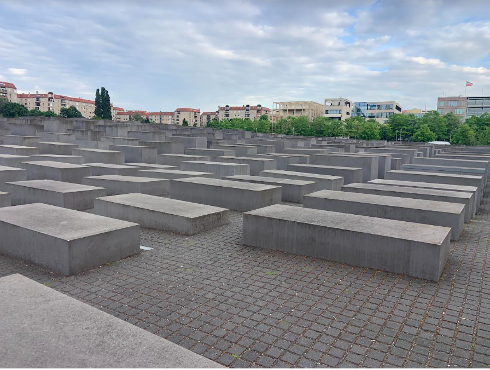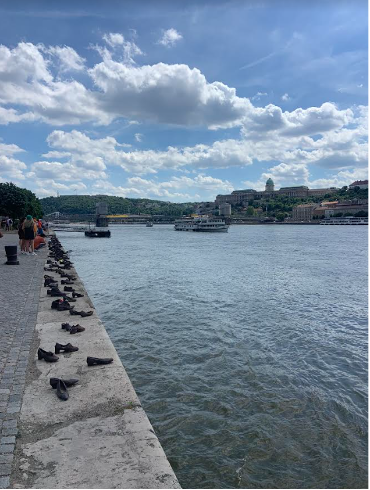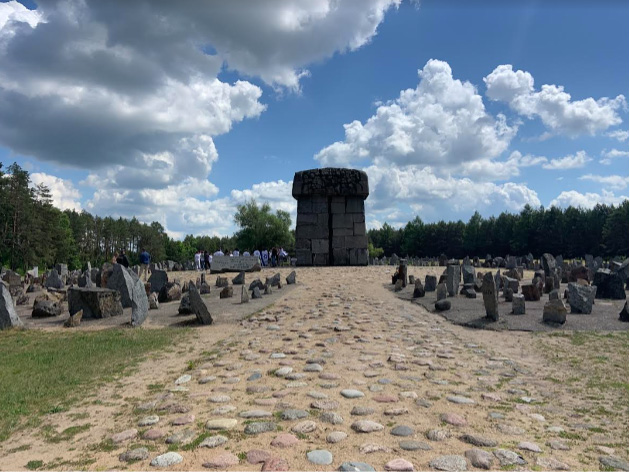Study Abroad Student Trip Report: Natalie Hester
This year on the Normandy Scholars Trip we went to Berlin, Budapest, and Warsaw. The Normandy Scholars Program focuses on World War II studies. Out professor Dr. Monica Black specifically studies the eastern front region where the Germans and Soviets fought and where most concentration camps are located.
Featured in the first photo is the Memorial to the Murdered Jews of Europe in Berlin. The concrete blocks are all slightly different from each other with the blocks in the middle being much taller than the outer blocks. The memorial does not have a designated interpretation, but rather is open to your own. I felt that the repetition of the concrete blocks with slight variants represented how all Jews had similar experiences, but each story is unique to each individual. Other WWII sights we visited include the Sachsenhausen concentration camp, Soviet War Memorial, and the House of the Wansee Conference. Outside of the designated sites, my classmates and I ventured to the East Side Gallery where the largest section of the Berlin Wall remains, and artists decorated the wall with touching paintings. In between sightseeing, we tried delicious German food with my favorites being döner and currywurst.



The next city we visited was Budapest, Hungary. Budapest is separated by the Danube River, which separates the “Buda” side and the “Pest” side. The photo shows The Shoes on the Danube Promenade. These iron shoes mark where Jews were forced to the edge of the river then shot and pushed in by the Arrow Cross Party (Hungary’s version of the Nazi Party). It was quite shocking to think about such a horrific event happening in such a beautiful scenery. All of Budapest was gorgeous with amazing stone architecture. Everything from the Castle district on the Buda side to St. Stephen’s Cathedral on the Pest side was breathtaking. Hungarian Pork was my favorite Hungarian dish.
Finally, we visited Warsaw, Poland. Outside of Warsaw is the Treblinka death camp. The camp is now a memorial site since the Nazis destroyed the camp before the Soviets invaded. The most touching thing about this memorial is the stones with the names of towns on them. There are about 7,000 stones sticking out of the ground with larger stones displaying the name of a town that represents the ghetto from that town that was sent to this death camp. I found it very touching because I know if I saw my hometown listed on one of the stones it would feel very personal. Back in the city center of Warsaw, we experienced the “Old Town” and explored the small shops and restaurants nearby. My favorite dish in Warsaw was the Perogis.
Overall, I am grateful for the experience because it allowed me to deeply study another subject outside of engineering. As a Civil Engineering student, it was a great opportunity to see how other cities operate, especially the public transportation. The Normandy Scholars Program allowed me to gain perspective on civilian city life not only from an engineering view, but also keeping history and the memory of history in mind.